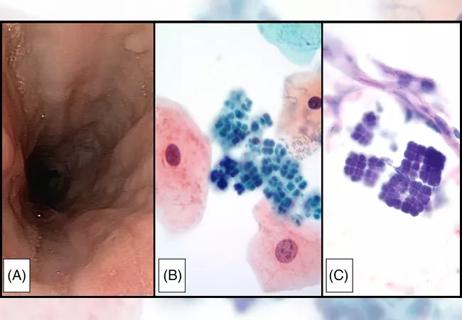How do we get there? A look at review of the evidence to-date

By Jennifer Hockings, PharmD, PhD
Advertisement
Cleveland Clinic is a non-profit academic medical center. Advertising on our site helps support our mission. We do not endorse non-Cleveland Clinic products or services. Policy
What if finding the right medication and dosage for your patient with ADHD were as simple as a cheek swab?
Interpatient variability in response to medications is an ongoing concern in the medical field. Despite adjustments for age, weight, concomitant medications, and renal or hepatic function, certain patients respond well to medications, some experience severe adverse effects, while others do not respond at all. Pharmacogenomics — the study of how an individual’s genetic variations impact the response to drugs — has emerged as an essential tool to optimize therapy and minimize the risk of adverse effects.
Attention deficit hyperactivity disorder (ADHD) is estimated to affect 11 percent of children ages 4 to 17 in the United States. It is characterized by pervasive functional impairment that may contribute to poorer school performance, greater healthcare utilization and worse long-term socioeconomic outcomes.
The American Academy of Pediatrics recommends the use of pharmacotherapy and/or behavior therapy for children aged 6 to 11 diagnosed with ADHD. Currently, pharmacotherapy for the treatment of ADHD is divided into two classes:
Of these medications, methylphenidate has been the most frequently dispensed, while atomoxetine prescriptions peaked in 2004 and have since experienced a statistically significant downward trend.
While the majority respond to therapy, some patients may discontinue medication use due to adverse side effects or lack of response. The observed interpatient variability is likely associated with inherited genetic differences in drug metabolism, as well as target receptors in the dopaminergic, serotonergic and noradrenergic signaling pathways.
Advertisement
Several genetic variants are being studied in regards to therapeutic response to ADHD medications. These include, but are not limited to, carboxylase easterase 1 (CES1), cytochrome P450 2D6 (CYP2D6), dopamine receptor D1-5 (DRD1-5), adrenoceptor alpha 2A (ADRA2A), catechol-O-methyl-transferase (COMT).
Of these genes, CYP2D6 has more than 100 allelic variants that have been defined and can be characterized as normal function, decreased function, or no function. CYP2D6 genotype results are generally reported as a diplotype, but some individuals may carry more than two copies of CYP2D6. Depending on the function of the duplicated alleles, CYP2D6 enzyme activity may be increased, resulting in a phenotype classification of ultra-rapid metabolizer.
Individuals who carry one decreased function allele and one no function allele are classified intermediate metabolizers, while individuals who carry two no function alleles are classified as poor metabolizers. The majority of the general population carry two normal function alleles and are classified as normal metabolizers. The CYP2D6 enzyme metabolizes atomoxetine to 4-hydroxyatomoxetine.
A single dose, pharmacokinetic study demonstrated that 6 to 17-year-old children diagnosed with ADHD who are CYP2D6 poor metabolizers had a statistically significant higher plasma concentration and decreased clearance of atomoxetine, as compared to CYP2D6 normal metabolizers. The association between CYP2D6 and atomoxetine was further examined in a case series of 10 children diagnosed with ADHD and treated with atomoxetine who experienced either an adverse effect or a late response (defined as greater than nine weeks after initiation of atomoxetine treatment). Eight children carried either a no function or decreased function CYP2D6 variant and were classified as CYP2D6 intermediate metabolizers. The atomoxetine dose was reduced for four children who at follow-up reported efficacy with better tolerability. The remaining four refused to continue atomoxetine due to their initial experience with adverse effects.
Advertisement
Analysis from pooled data suggests that CYP2D6 poor metabolizers have greater increases in heart rate, diastolic blood pressure and frequency of tremors, as compared to CYP2D6 normal metabolizers. Pre-emptive CYP2D6 genotyping may help identify the subset of the population who need lower atomoxetine doses to minimize the risk of adverse events and therapy discontinuation. Currently, prescribing information for atomoxetine indicates that children weighing up to 70 kg who are predicted to be CYP2D6 poor metabolizers should be initiated at 0.5 mg/kg/day and should wait four weeks prior to increasing to the target dose of 1.2 mg/kg/day if needed. Dosing for individuals who are CYP2D6 intermediate or ultra-rapid metabolizers was not provided.
Of note, the Clinical Pharmacogenetics Implementation Consortium (CPIC) has plans to publish guidelines focused on CYP2D6 and atomoxetine after extensive literature evaluation. Unfortunately, the clinical utility of adjusting other medications used to treat ADHD based on pharmacogenomics results is unclear at this point in time. In particular, the studies examining the variant-drug combinations with stimulants is lacking clear evidence of an association or have not been replicated. Given the potential socioeconomic impact of ADHD, further studies that would provide a clear association are of great importance and eagerly awaited.
Pharmacogenomic testing can help providers to prescribe medications and doses that are safe and effective, at times achieving the positive clinical outcomes with minimal side effects. Importantly, however, more studies, with much larger sample sizes, are needed before we can be certain that the cost-to-benefit scales tip in the favor of pharmacogenomic testing for ADHD medications.
Advertisement
Advertisement

The relationship between MTHFR variants and thrombosis risk is a complex issue, but current evidence points to no association between the most common variants and an elevated risk

Pathophysiology, clinical features and disease management

How should you proceed?

LARGE-PD aims to bring personalized medicine to bear for neglected population

Stewardship and interpretation the difference between revolutionary and dangerous

A pharmacogenomics clinical specialist urges caution

An expert offers her take

A road map to wellness